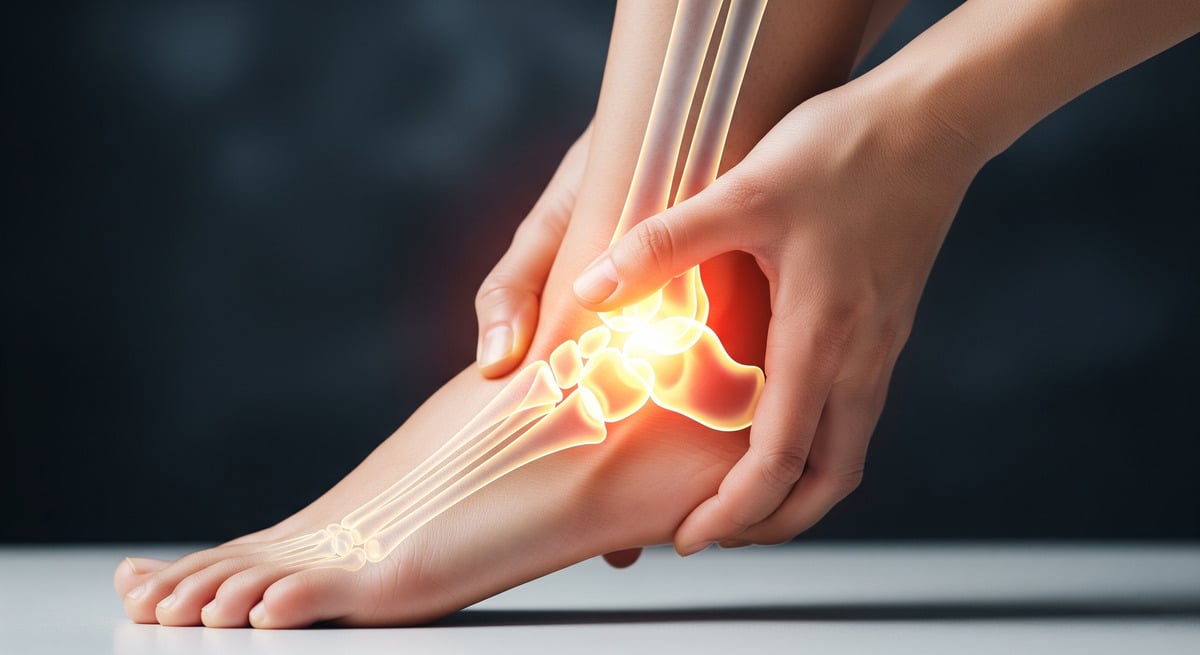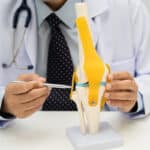
Foot drop is a condition that makes it difficult to lift the front part of the foot. It can affect the way you walk and perform other physical activities. While this can be annoying, performing exercises consistently to strengthen the muscles in your hips, legs, and feet can be an effective way to correct mobility issues caused by foot drop. Keep reading to find out what causes foot drop, how to treat it, and how to perform foot drop exercises effectively.
Common Causes of Foot Drop
A variety of genetic and external factors can cause foot drop; they include:
- Nerve injuries: Any injury leading to the compression of the peroneal nerve, which controls the muscles involved in lifting the foot, can cause foot drop. A serious knee injury or a mistake during knee replacement surgery can pinch the peroneal nerve and cause foot drop.
- Prolonged kneeling or leg crossing: Staying in these positions frequently for long periods of time can compress the peroneal nerve, resulting in foot drop.
- Muscle disorders: Muscular dystrophy progressively weakens the muscles that lift the foot and can cause foot drop.
- Brain and spinal cord disorders: Strokes, multiple sclerosis, and amyotrophic lateral sclerosis can affect the nerves that control your foot, resulting in foot drop.
- Neurologic disorders: Other conditions that may cause foot drop include acquired peripheral neuropathy, Charcot-Marie-Tooth disease, and polio.
How Can I Treat Foot Drop?
Here are some effective treatment methods for foot drop:
- Physical therapy: Foot drop exercises and stretches can improve your flexibility and strengthen your foot and leg muscles.
- Electrical nerve stimulation: This involves electrodes being placed on your lower leg to send electrical impulses to the affected nerve. It can relieve pain and relax your muscles.
- Braces: Ankle and foot braces can hold the front part of your foot in place to stop it from dragging. They can correct an abnormal gait and make walking easier.
- Surgery: When conservative treatment fails, surgery may be necessary to improve mobility. A doctor may recommend fusing your ankle or foot bones or transferring a tendon from the unaffected leg to the affected one to pull your foot up.
6 Effective Foot Drop Exercises
Foot drop exercises can improve your mobility by strengthening your foot and leg muscles. Each of these exercises targets specific muscles and trains a particular type of movement. We recommend you do as many repetitions as you can for each exercise (even if you’re only able to do a few). The frequency and intensity with which you perform these exercises should depend on the severity of your condition as well as your physical limitations. It’s important to note that many of these exercises wouldn’t be suitable for severe cases of foot drop, so be sure to get approval from a doctor before trying them. Once you’ve been given the go-ahead, make sure you stay consistent with your exercise routine for the best results.
Assisted Ankle Dorsiflexion
This exercise can improve ankle joint mobility. It strengthens the front of your lower leg and helps you practice lifting your foot off the floor.
To perform assisted ankle dorsiflexion, sit in a chair with your feet flat on the floor. Place an exercise strap under each foot and use it to slowly lift the front part of your feet off the ground while keeping your heels firmly grounded. Hold your feet up for a few seconds and then slowly lower them back down.
Ankle Adduction and Abduction
Ankle adduction and abduction help to strengthen the muscles along the sides of the ankle, which can improve balance, decreasing the likelihood of falls and injury.
To perform ankle abduction, sit on the floor with one leg stretched straight in front of you, place a resistance band around the ball of your foot, and hold the other end of the resistance band in your hand. With your toes pointed upward, twist your foot as far outward as you can. Then, slowly bring it back to the starting position and repeat the movement. When you are finished on one foot, you can repeat the same process on the other for an equal number of repetitions if possible.
To perform ankle adduction, sit on the floor with one leg stretched straight in front of you, place a resistance band around the ball of your foot, and hold the other end of the resistance band in your hand. With your toes pointed upward, twist your foot as far inward as you can. Then, slowly bring it back to the starting position and repeat the movement. When you are finished on one foot, you can repeat the same process on the other for an equal number of repetitions if possible.
Toe-To-Heel Rock
This exercise is designed to improve balance. It can increase your feet and ankles’ range of motion and reduce the risk of falls.
To perform a toe-to-heel rock, stand up straight and transfer your weight onto your toes and then backward onto your heels. It’s important to maintain control of the motion to avoid falling. If you need to, you can hold onto a sturdy chair or table for support while doing the exercise.
Hip Abductions
This exercise can strengthen the hip muscles and improve hip mobility to make walking with foot drop easier. In combination with exercises that specifically target the foot, it can improve mobility.
To perform this exercise, you will need to be wearing socks and have access to a smooth floor that you can slide on easily. First, sit in a chair with your feet flat on the ground. Then, slowly slide your knees as far outward as they will go while keeping your feet flat on the floor. Hold this position for a few seconds. Bring your knees back to the starting position and repeat.
Seated Plantar Flexion
This exercise is designed to strengthen the back part of your lower leg. It can contribute to improved mobility when walking.
To perform plantar flexion, sit on the floor with your legs extended in front of you and your toes pointing up. Then, point your toes as far forward as they will go and hold that position for a few seconds. Return to the starting position and repeat.
When this becomes too easy for you, you can place a resistance band around your toes to add more intensity.
One-Legged Balance Disk Stand
This is an advanced exercise that you can try when the others have become too easy. It uses a balance disk to strengthen the muscles that stabilize the ankle joint and can improve mobility.
To perform this exercise, position a balance disk near a wall that you can hold onto for support. Then, carefully climb onto the balance disk and find your balance using the wall if needed. Once you are steady, raise one foot so that you are standing on the balance disk with one leg. Hold the position for as long as you can, and then switch legs.
What if Exercise Doesn’t Help?
If your foot drop symptoms persist even after trying these exercises, it may be time to seek professional help. At Oklahoma Spine and Pain Management, we provide personalized care for foot drop to help you manage pain and improve your mobility. You can schedule an appointment with us to discuss available treatment options. We’re more than happy to help!
Frequently Asked Questions (FAQs)
How does foot drop affect walking?
Foot drop can cause your foot to drag on the ground when you’re walking. As a result, you may find yourself lifting your leg higher to avoid dragging your foot. This can make a slapping noise as the front of your foot hits the ground with each step.
Can foot drop go away on its own?
Yes, foot drop may go away on its own if it’s caused by temporary nerve compression or an injury. However, if it’s caused by more serious nerve damage, it may not heal until you get proper treatment.
Is foot drop permanent?
In some cases, foot drop can be permanent. Genetically inherited degenerative conditions can cause permanent foot drop. However, foot drop caused by temporary nerve compression due to injury or lifestyle factors can improve with the right treatment.






